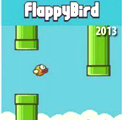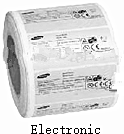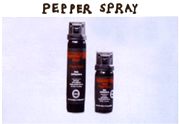题目内容
9.Teachers and parents usually call attention to the pictures when reading storybooks to preschool children.But a new study suggests that calling attention to the print the words and letters on the page may lead to(1)Breaders.The two-year study(2)Achildren aged 3 to 5 who were regularly read to this way in class with children who were not.In all,over three hundred students,who were considered to be at serious risk of(3)C reading problems in future life,were(4)Din a classroom setting.After reviewing the recorded lessons,the researchers found that those students whose teachers most often(5)Bthe print showed clearly higher skills in reading,spelling and understanding.
Professor Shayne Piasta,the study's author,says most teachers would find this method(6)Dbecause it needs only a small change in the way they teach.They already read storybooks in class.The only(7)Ain the new method would be increased attention to the print.
Ms.Piasta says if adults can(8)Cchildren in the stories and get them to pay attention to letters and words,it makes sense that they will do better at(9)Arecognition.But few parents and teachers do this in a(10)Bway starting first with letters,then(11)Cmoving to words,sentences and paragraphs.
Teachers and parents can point to a letter and outline its(12)Bwith a finger.They can point out a word and(13)C."This is‘dog'".They can discuss the(14)Dof the print to find how the words combine to tell the story.And they can talk about the(15)Aof the print for example,how words are written from left to fight.
| 1. A.clearer | B.better | C.higher | D.happier |
| 2. A.compared | B.paired | C.related | D.involved |
| 3. A.avoiding | B.solving | C.developing | D.forcing |
| 4. A.found | B.locked | C.interviewed | D.observed |
| 5. A.studied | B.discussed | C.saw | D.ignored |
| 6. A.reliable | B.illogical | C.unbelievable | D.manageable |
| 7. A.difference | B.concern | C.problem | D.challenge |
| 8. A.annoy | B.leave | C.interest | D.puzzle |
| 9. A.word | B.voice | C.story | D.number |
| 10.A.easy | B.systematic | C.different | D.typical |
| 11.A.silently | B.suddenly | C.gradually | D.mostly |
| 12.A.route | B.shape | C.move | D.sound |
| 13.A.guess | B.think | C.explain | D.answer |
| 14.A.size | B.style | C.form | D.meaning |
| 15.A.organization | B.development | C.information | D.improvement |
分析 一项新研究显示,在给学龄前儿童讲故事时,鼓励他们注意书页上的字词能更好地促进他们阅读、拼写和理解能力的发展,即成为更好的(better)读者.
解答 1-5 B A C D B 6-10 D A C A B 11-15 C B C D A
1.B 由句意可知,对印刷物字词语句的关注会塑造一个更好的(better)读者.结合下文,这样的读者有更强的辨识力,是更优秀的.clear 意为"清楚的",high 意为"高的",happy 意为"快乐的",均与题意无关.故正确答案为B.
2.A 由本句句意及下文可知,这项历时两年的研究是对照性试验,因此是将两组不同的实验对象作比较,即在按常规方式阅读和非常规方式阅读的两组孩子之间作比较(compare).pair 意为"把…组成一对",relate 意为"联系",involve 意为"包含;涉及",均不符合题意.故正确答案为A.
3.C develop 在此意为"使发生,使发展".由句意可知,那些按照课堂模式阅读的孩子更可能出现(develop)阅读障碍.avoid 意为"避免",solve 意为"解决",force 意为"逼迫",均与文意不符.故正确答案为C.
4.D 由上文可知,这是一个对照性实验,实验对象应该是被研究者观察(observe),而非发现(find)、锁入(lock)和采访(interview).故正确答案为D.
5.B由句意可知,那些和老师讨论(discuss)印刷字体的学生有着更高的阅读、拼写和理解技能.在课堂上,老师和学生进行问题的有关讨论,而不是研究(study),故排除 study;see 意为"看见",ignore 意为"忽视",均不符合文意,故排除.故正确答案为B.
6.D A项,reliable"可信赖的";B项,illogical"不合逻辑的";C项,unbelievable"难以置信的";D项,manageable"易管理的;易控制的".
由句意可知,老师们发现这种新的方法比较易于管理和操作(manageable),因为只需要在他们原来方法的基础上加入一点点小小的改变(a small change),即对印刷字体的关注.故正确答案为D.
7.A 由上文可知,新方法与旧方法仅有的不同(difference)就在于对印刷字体的关注.concern 意为"担忧",problem 意为"问题",challenge 意为"挑战",均不符合题意.故正确答案为A.
8.C 由句意可知,如果成年人可以使孩子们对故事感兴趣(interest)并且对印刷字多一点关注,就可以更好地提高他们的辨识力.annoy 意为"惹怒",leave 意为"离开;剩下",puzzle 意为"使困惑",均不符合句意.故正确答案为C.
9.A 由前面的 letters and words 可知,如果对印刷字体多一点关注的话,有所提高的就应该是对字词的辨识力(words recognition).voice 意为"声音",story 意为"故事",number 意为"数字",在文中均未提及.故正确答案为A.
10.B 由句意可知,很少有老师会用这么一种系统的(systematic)方式引导学生阅读:从字母到单词,再到句子,再到段落.这种方式是循序渐进的,有体系的,故选用 systematic.easy 意为"简单的;安逸的",different 意为"不同的",typical 意为"典型的",均不符合题意.故正确答案为B.
11.C 由句意可知,整个由字母到单词、句子和段落的过程是渐进的、有序的,因此此处应为渐渐地(gradually),而非静默地(silently)、突然地(suddenly)和主要地(mostly).故正确答案为C.
12.B 由前面的 outline(勾勒;描画…的轮廓)及本句句意可知,老师和家长可以用手指指出一个单词并描出它的轮廓和形状(shape).route 意为"路线",move 意为"移动",sound 意为"声音",均不符合题意.故正确答案为B.
13.C 由上文可知,家长和老师可以指出一个单词并向孩子们解释(explain)它的含义.guess 意为"猜",think 意为"思考",answer 意为"回答",均不符合题意.故正确答案为C.
14.D由句意可知,他们会讨论单词的含义(meaning),并且一起探讨单词是如何与故事结合起来的.size 意为"大小;尺寸",style 意为"风格",form 意为"形式",均不符合句意.故正确答案为D.
15.A A项,organization"组织;机构";B项,development"发展;开发";C项,information"信息";D项,improvement"改进,改善".由句意及下文中的字体从左到右可知,他们也可以谈论字体印刷的排版结构(organization).故正确答案为A.
点评 完型填空,解题时首先需通读全文,理顺题意,找出信息词,建立语言的整体感.这是做好完型填空题的关键.其次细读首尾,推测意图,文章的首句是全文的"窗口",尾句是文章的总结、结论或点睛之笔.这样,通过阅读首句和尾句,就可以了解背景知识,对于空格位置的词语进行大胆分析和判断,以便揣测作者的意图,理顺思路,为后面的答题做好铺垫. 最后在通读全文的基础上,根据全文大意,展开逻辑思维,瞻前顾后,分析这一空格处在句中的地位,前后的关系和它所起的作用,认真观察选项,仔细推敲,确定最佳答案.

| A. | care about | B. | turn to | C. | set up | D. | get along with |
"What's that?"I asked when I first heard the gentle thumping(重击声)."It sounds like Joe is outside playing basketball,"my wife,Anita,said.She(37)Band listened more devotedly."It's coming from the(38)C."she said."Maybe it's one of the little kids."We rushed out the door.Jonathan,our youngest,was(39)Ato make trouble."If he's making holes in the wall again…"I said as I searched there.No(40)Bat all.But there was that(41)Dagain,coming from right up there.
And that's when I(42)Bthe sparrow.It was flying(43)Djust inches below the ceiling.It was(44)Ctrying to get out,but couldn't see that the way out wasn't up,but down(45)Athe open door.So the bird continued (46)Cits wings and hitting its head against the(47)D.
"Poor thing,"Anita said."It must be(48)D."
"Well,maybe it's because of us,"I said as I moved toward it.I tried to show the bird how to glide(滑翔)down to get outside,but that only seemed to(49)Ait more."Why don't we just (50)Afor a few minutes?"Anita suggested."I'm sure he'll (51)Deventually."So we went back into the house,where we continued to hear the ongoing(52)CThen suddenly,it was(53)D.We looked into the garage,and our uninvited guest was gone.
"See?"Anita said."I told you he'd succeed."
"Yeah,"I said."But how many knocks on the head did it(54)Ahim?"
I've thought about that little sparrow through the years.Just like that sparrow,we often meet situations,we don't know how to(55)B.Born to go upward,we don't even consider the possibility that something good might happen if we stop flapping(拍打)around and just glide down a little bit.
| 36.A.for example | B.rather than | C.or rather | D.as well |
| 37.A.hurried | B.paused | C.ignored | D.confirmed |
| 38.A.basement | B.kitchen | C.garage | D.hall |
| 39.A.easy | B.happy | C.sorry | D.angry |
| 40.A.sparrows | B.children | C.birds | D.holes |
| 41.A.guest | B.voice | C.knock | D.sound |
| 42.A.watched | B.found | C.realized | D.caught |
| 43.A.carefully | B.gently | C.patiently | D.anxiously |
| 44.A.eventually | B.unwillingly | C.obviously | D.thoroughly |
| 45.A.through | B.over | C.below | D.beyond |
| 46.A.shaking | B.breaking | C.striking | D.injuring |
| 47.A.wall | B.floor | C.door | D.ceiling |
| 48.A.clumsy | B.painful | C.amazed | D.terrified |
| 49.A.frighten | B.comfort | C.confuse | D.calm |
| 50.A.leave | B.scream | C.relax | D.escape |
| 51.A.put it aside | B.leave it alone | C.give it up | D.figure it out |
| 52.A.accident | B.achievement | C.struggle | D.trouble |
| 53.A.excited | B.tired | C.noisy | D.silent |
| 54.A.cost | B.offer | C.earn | D.owe |
| 55.A.classify | B.handle | C.debate | D.conclude |





